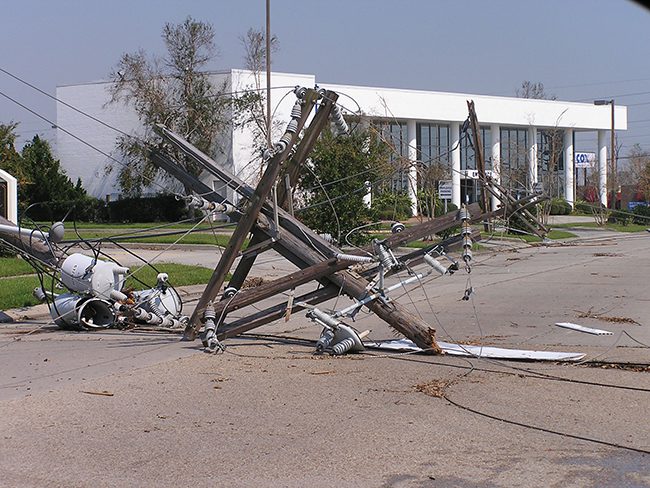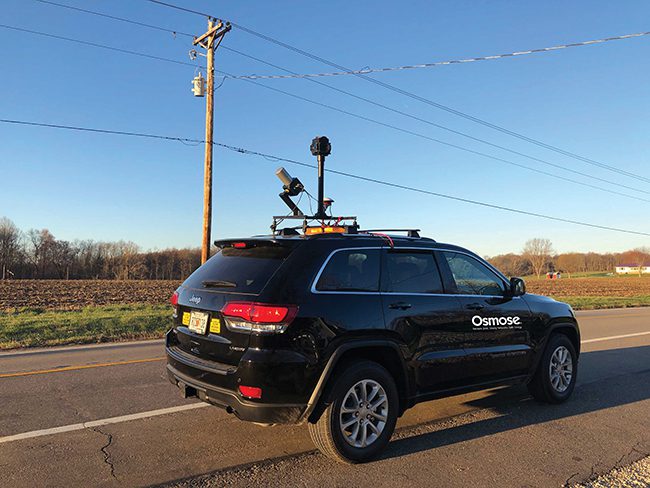Innovating Grid Resilience from the Outside In
Operational innovation—creating new ways of performing core business functions like grid asset management—can provide reliable, relatively low-cost transformation for electric utilities. One area for utilities that is in dire need of rapid operational innovation is grid resiliency, and some are seeking innovative grid hardening help from the outside in.
 |
|
1. On average, U.S. electricity customers experienced just more than eight hours of electric power interruptions in 2020, according to the U.S. Energy Information Administration (EIA). The duration was the most since the EIA began collecting electricity reliability data in 2013. Courtesy: Osmose |
As the growing number and severity of extreme weather events make headlines worldwide, utilities are wisely focused on grid resiliency. Power outages triggered by major storms have doubled in the past 20 years (Figure 1). Experts at Colorado State University predict an above average 2022 storm season with 19 hurricanes, including at least four with maximum sustained winds greater than 110 mph.
Ensuring grid resiliency is a societal and business imperative that includes hardening transmission and distribution (T&D) structures, mitigating potential damage, and helping affected residents recover quickly. At the same time, many utilities face shrinking operations and maintenance budgets, and see the investment in resiliency as prohibitive. The industry needs a new model for achieving and sustaining structural resiliency that gets results more quickly, effectively, and affordably.
Smart Asset Management
As a leading operational services provider for utilities, Osmose has a history of introducing innovative products, services, and analytics to harden T&D structures for long-term resilience. Osmose recently combined several of its recent innovations to create Structural Resiliency as a Service. The new offering incorporates data collection methods, predictive analytics, and advanced hardening methods to help utilities prioritize, reinforce, or strategically replace vulnerable structures faster and at a lower cost.
 |
|
2. OsmoVision collection incorporates vehicle or backpack data acquisition and photogrammetry. Eliminating the need to collect physical measurements in a field like angles, span lengths, and heights reduces the chance for human error and inconsistencies in pole attribute data. Courtesy: Osmose |
Advanced Data Collection. For deeper risk identification and validation, OsmoVision is a turnkey data acquisition and processing solution that leverages state-of-the-art data capture and visualization technology (Figure 2) to improve the accuracy, consistency, and efficiency of resilience analysis and modeling, while lowering cost. Data captured is used to create and evaluate digital twins of structural assets to support various engineering use cases.
 |
|
3. O-Calc Pro features an advanced user interface and calculation tools that make it a highly accurate and productive application for performing comprehensive pole loading analyses for joint use, equipment or line upgrades, system hardening, and pole replacement. Courtesy: Osmose |
Predictive Analytics. Osmolytics is a unique analytics solution fueled by the largest repository of utility structure asset data used to examine the distribution of a utility’s grid structures by age and risk scenarios, and geospatial asset views, too. O-Calc Pro is a structural calculation engine (Figure 3) used to simulate extreme weather events and to demonstrate which of a utility’s assets may be most at risk. This is done using asset data and information without any field visits through a process called Data-Driven Load Screening. The output is a summary of structures at risk due to extreme weather events as well as recommended system hardening solutions or replacement designs.
 |
|
4. The Tough Truss Upgrade, which is banded to the front of the pole in this image, works in conjunction with sound wood poles to create a combined bending capacity greater than the original pole. Courtesy: Osmose |
Asset Strengthening. Structural health and strength must be ensured before hardening for resilience can be fully effective. Osmose pioneered the use of trusses to restore and reinforce wood poles and its Tough Truss systems (Figure 4) are used to harden and maintain the strength of those assets. These innovative trussing systems can upgrade pole bending capacity by an equivalent 1, 2, 3, or more classes.
Positive Results in the Field
Three recent implementations illustrate how this example of operational innovation—Structural Resiliency as a Service—is an effective and efficient solution that can be customized for a specific utility’s needs.
 |
|
5. Osmose has more than 4,600 employees, including field technicians, professional engineers, wood scientists, and corrosion experts, working to make utility structures safer, longer-lasting, and more resilient all across the U.S. Courtesy: Osmose |
Taking a First Step. In a state whose power grid has received more attention than it would like, one southwestern U.S. utility has taken the extra effort to ensure it is prepared for the next disaster. As an initial step toward a more advanced asset resilience program, the utility selected 13 circuits for a virtual load screening to confirm its grid’s health. Osmose’s O-Calc tool found that nearly 20% of the poles in the designated area were overloaded and vulnerable to adverse events. After Osmose technicians (Figure 5) went into the field and confirmed the findings, the utility engaged the company to evaluate another 28 circuits in its ongoing resiliency efforts.
Measured and Methodical. In the aftermath of the catastrophic 2005 hurricane season and the massive power outages that followed, a southeastern U.S. utility began an initiative to address grid weaknesses that continues today. The program includes foresight, hardening, and response measures. Among the actions taken are:
- ■ Osmose crews performed a full excavation and evaluation on every pole in this utility’s network, focusing on conditions in the critical zone from the area immediately above ground level down to 18 inches below the surface.
- ■ Beyond the ground level assessment, Osmose created a load calculation for each pole in the company’s overhead network. Osmose’s O-Calc Pro, an advanced analysis tool, was used to evaluate structural data, including communication attachments, conductor size, construction type, span length, and pole condition.
- ■ Restoration can bring poles back above National Electrical Safety Code (NESC) code compliance for one-third or less of replacement cost. Where the O-Calc tool determined that pole strength was insufficient to handle hurricane force winds, an Osmose-engineered truss was installed to reinforce the existing structure. Poles that had degraded beyond restoration were replaced.
- ■ Since reliability and resiliency are closely linked, the investment made to ensure this utility’s grid weathers black-sky events has led to less downtime during blue skies, too. The utility stated that “disciplined, long-term investments to build a stronger, smarter, and more storm-resilient energy grid continue to yield tangible benefits in good weather and bad.”
- ■ Since the utility began its resiliency program—including engaging with Osmose—it has reduced outages, interruptions, and flickers, and improved reliability by 45%. It was recognized as the most reliable provider in the nation, winning ReliabilityOne’s National Reliability Award for multiple years.
- ■ After Category 3 Hurricane Wilma in 2005, the utility experienced more than 12,000 pole failures and could only restore 4% within 24 hours. After Category 4 Hurricane Irma in 2017, following two eight-year cycles of asset life extension, it experienced 70% fewer pole failures and was able to restore 40% within 24 hours.
Accelerated and Prioritized. A Gulf Coast utility knew it had to harden its power grid and had allocated funds to do so. Still, the investor-owned utility needed a dependable and defendable plan to support the work. Unlike other utilities that inspect and treat every pole in their grid over an extended period, the company wanted to take faster, more focused action. The company needed to quickly prioritize which poles could withstand the most extreme weather conditions and which required remediation.
Using years of inspection data collected on this utility’s 150,000 power poles, Osmose was uniquely positioned to help. Focusing on the utility’s most vulnerable coastal region, Osmose technicians went into the field to confirm the digital model’s validity using OsmoVision, the company’s digital system for collecting and processing structural details. The result was a focused hardening to-do list for the utility.
—Mark Copeland is Chief Innovation and Marketing Officer with Osmose.